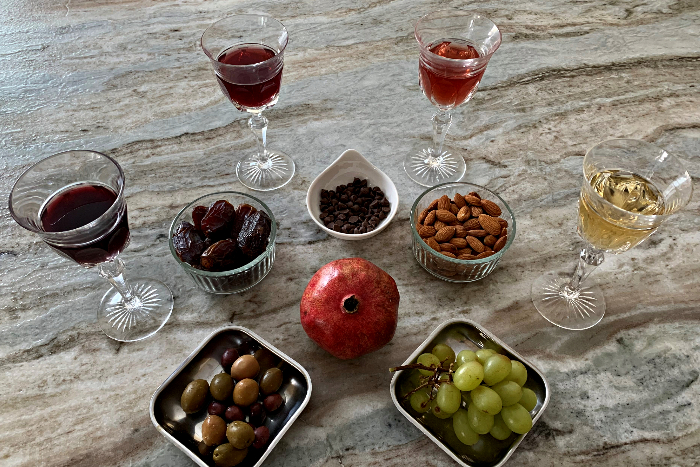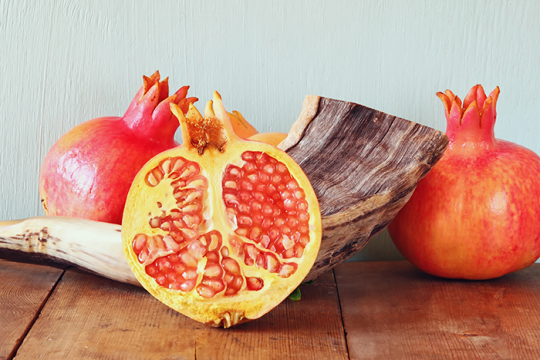
Although I expect we probably did some version of a Tu BiShvat seder when I was a child in religious school, as an adult I didn’t have strong memories of celebrating this Jewish holiday.
Last year, as I thought about what would be involved if we did our own Tu BiShvat seder, it seemed interesting and fun. Tasting lots of kinds of fruits? Marking a time to appreciate, mindfully and respectfully, trees and the earth? Drinking red and white wines and/or grape juices? Yes, please.
I was curious to try this as an experiment. Passover seders are always a treat for us and our loved ones; perhaps a Tu BiShvat seder might become one of the regular Jewish rituals we choose to interpret in a meaningful and personal way. Even if not, it made sense in January 2021 – when my husband, my 14-year-old daughter, and I were all fortunate to be healthy and safe at home with a good amount of unstructured time available – to give a Tu BiShvat seder a try.
I gathered resources from ReformJudaism.org and other online searches to inform how we would create our celebration. We kept it informal and made it our own.
We started with tzedakah. I couldn’t tell whether that’s traditionally part of the seder or not, but because it’s our family’s custom before Shabbat and Havdalah, it seemed to make sense. We talked about donating the amount when the box fills up to help the environment in honor of Tu BiShvat.
Among the traditional blessings we recited included Shehecheyanu, my favorite, expressing thanks for reaching a joyous moment and for tasting new fruits for the first time as we reach this season. sanctifies the four cups of variously shaded juice that signify the four seasons.
We discussed some of the kabbalistic (Jewish mystical) symbolism of the holiday. We sampled different types of fruits and nuts: almonds, dates, grapes, citrus, pomegranate, olives, and carob.
We sang about the Tree of Life (the Torah) and reminded ourselves that during the coldest of wintertime here in the northeastern United States, it’s starting to become spring in Israel. We reviewed our actions that are pretty eco-friendly and what steps we could take for a more sustainable lifestyle.
A few readings were included, chosen because I knew they would resonate most with the three of us. We shared aloud a Facebook post by Rabbi Rick Jacobs, teaching us the story of Anne Frank’s tree, and as big Marvel Cinematic Universe fans, we enjoyed learning about the Puerto Rican origins of Groot, the tree-like superhero creature.
We took a moment to express gratitude for trees and gratitude for each other. Definitely time well spent.
Will we do it again this year? It’s very likely that we will, and that we’ll choose the most meaningful aspects to us in the spirit of the holiday in 2022. That’s what we love about Reform Judaism: the prerogative and privilege to make our own informed choices about how to express our Jewish selves.
The bonus? It’s quite delicious.
Find everything you need to host your own Tu BiShvat seder.
Related Posts

Breathe Bravely

18 Tips for Your Coziest Shabbat Yet

